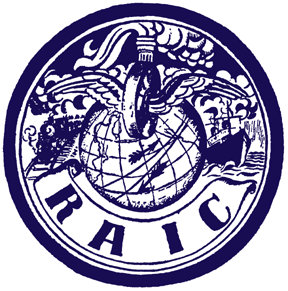 `
` `
`
The Russian-American Industrial Corporation was a product of the efforts of Sidney Hillman, President of the Amalgamated Clothing Workers of America. Hillman travelled to Soviet Russia in 1921 and sought to take some practical measure to alleviate the clothing shortage being experienced. Hillman ironed out the details for a cooperative commercial venture between an organization of American shareholders on the one hand and various Soviet state manufacturing trusts on the other. The Americans would contribute capital in the form of money and machinery as well as production know-how; the Russians would contribute already existing workshops in need of capital infusion, a ready labor force, and access to local markets. The Soviet Government guaranteed the principal of a proposed $1 million dollar investment as well as an 8% rate of return on the money so invested. In this manner, the Soviets would obtain foreign finance capital otherwise denied to them by an international credit boycott by the world banking community.
The RAIC's Soviet partner was the All-Russian Clothing Syndicate, established in June of 1922. By 1924 the syndicate consisted of some 34 factories, employing 17,500 workers. The syndicate sold its wares to Russian workers on an installment plan.
Initial capital for the RAIC came from the Amalgamated Clothing Workers, a New York-based union which contained a sizeable percentage of its members who were first or second generation emigrés from Tsarist Russia, mostly members of the oppressed Jewish nationality. Additional capital was generated by the sale of sales of stock for $10 each -- a program which was launched in the fall of 1922 and which continued throughout the middle 1920s.
The RAIC also contracted with Soviet banking authorities to expedite fund transfers from its shareholders in America to their families in the Soviet Russia.
The RAIC is known to have produced two pamphlets detailing its activities in 1923. No further information about these publications is known at the present time. It also published the financial report of its directors made to RAIC shareholders in Feb. 1924 as a pamphlet, the text of which is downloadable below.
"A Program of Reconstruction," by A.A. Heller [November 1, 1922] This article by the American representative of Soviet Russia's Supreme Council of National Economy (Vesenkha) in the organ of the Friends of Soviet Russia indicates that while Soviet industrial reconstruction will have to be achieved largely via Russia's own volition and internal financing, there are ways in which interested individuals can aid the process from abroad. Heller specifically mentions the work of the Society for Technical Aid to Soviet Russia (TA), an organization dedicated to equipping small parties wishing to go to Soviet Russia to establish agricultural communes or industrial cooperatives with tools, machinery, and provisions, as well as the Russian-American Industrial Corporation (RAIC), then in the process of being organized by Sidney Hillman of the Amalgamated Clothing Workers Union. In addition, Heller cites the need for direct capital investment via a Russian-American investment bank, detailing several specific cases in which comparatively small capital investment can be employed to profitably revitalize industry -- either in the form of a private concession or as a "mixed" government-private enterprise.
"A Splendid Opportunity," by Robert Minor [December 1922] Leading member of the Workers Party of America Robert Minor introduces the readers of the Friends of Soviet Russia's official organ to the new Russian-American Industrial Corporation (RAIC), established by Sidney Hillman of the Amalgamated Clothing Workers Union. Minor takes special care to diffuse the criticism leveled against the new corporation in the pages of the New York Tribune by former financial advisor William O. Thompson, who was sharply critical of Hillman for failing to engage in the lucrative export trade but instead concentrating on the more difficult and less profitable establishment of clothing manufacturing capacity in conjunction with various Soviet clothing trusts. Minor notes that Hillman had negotiated a state guarantee of both the principal invested by the RAIC as well as a guaranteed 8 percent return on that money. Thompson's failure to get behind this splendid opportunity meant little more than he had "lost his nerve" and "fallen for the old emigré's theory" that Soviet Russia would collapse imminently and thus was incapable of guaranteeing an investment or the return on that investment. Minor states that "the one remaining obstacle to its existence is the boycott of capitalists who will not supply it with industrial machinery. The Soviet Government appeals over the heads of the capitalists, asking the workers of the world to break the boycott by supplying industrial machinery as friend to friend in partnership.”
"Report of the Directors and Financial Statement Submitted to Second Annual Meeting of Stockholders of the Russian-American Industrial Corporation, Feb. 26, 1924." From the end of 1922 onward, solicitation of funds for Soviet Russia in the United States moved from an orientation of "aid to starving Russia" to one of "technical assistance for Russian industrial development." One of the primary institutions for this sort of fundraising was the Russian-American Industrial Corporation (RAIC), an organization largely backed by the energy and assets of the Amalgamated Clothing Workers of America. The RAIC entered into a financial partnership with the state-owned textile manufacturing trusts of Moscow, Petrograd, and Kazan, which combined to form the All-Russian Clothing Syndicate, in which RAIC invested its funds. The organization sought to capitalize itself to the tune of $1 million with the sale of $10 shares of stock. This is the text of the report of the Directors of the RAIC (including Sidney Hillman and Joseph Schlossberg) to shareholders, detailing the operations of the organization in 1923. A balance sheet detailing assets and liabilities is also provided.
Other Organizations Page
Return to Document Downloads Page
Return to Early American Marxism Home Page